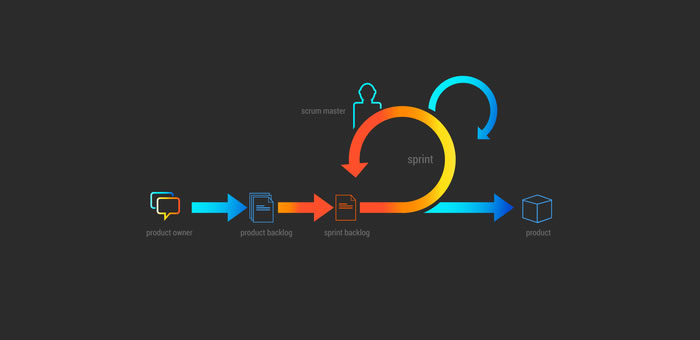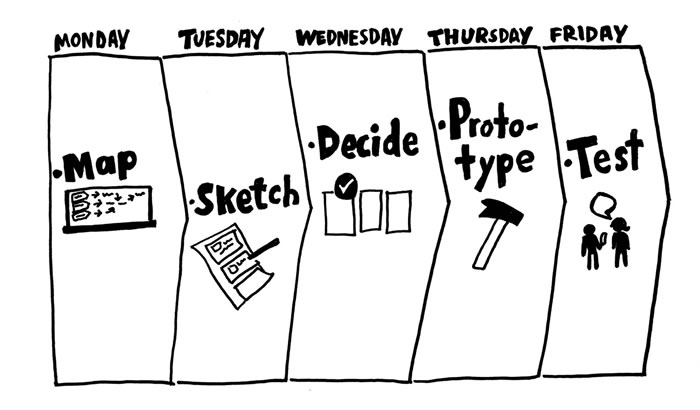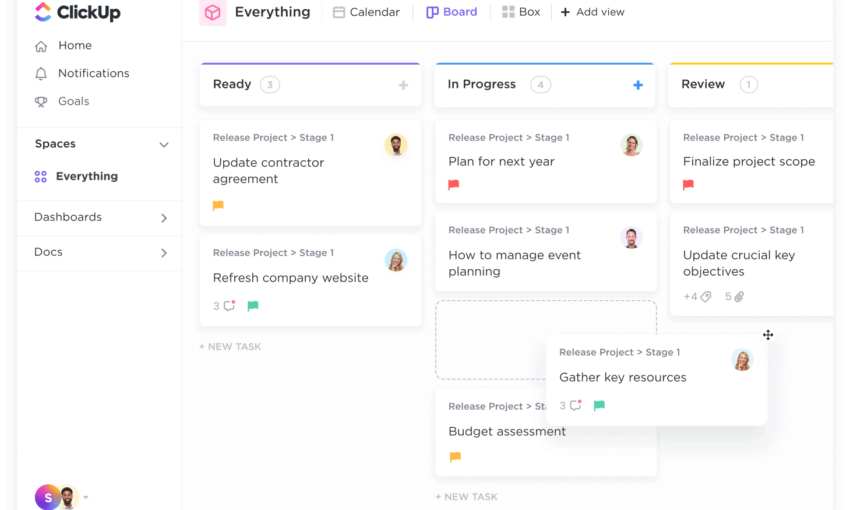Agile used in sports means athletic, energetic, and limber. It is applied to gymnasts and Olympic athletes at the top of their game. It can be used to describe mental processes that are fast, flexible, and acute.
In the world of user experience design, agile refers to a number of processes that start with minimal overhead and combines teams of collaborators to complete a fluid sequence of tasks. The agile approach values interactions and individuals, customer collaboration, and a quick response to change.
The UX Designer Toolbox
Unlimited Downloads: 500,000+ Wireframe & UX Templates, UI Kits & Design Assets
Starting at only $16.50 per month!
Scrum Methodology
An agile workflow based on the Scrum model started out in software design. It starts with a team planning meeting in which all members break down processes and decide how many each member can commit to. They create a list of tasks that can be completed in a specified length of time, usually between two weeks and a month.
The scrum team codes and tests features for functionality during the first agile sprint, a brief time frame for intense work. They attend brief, daily scrum meetings facilitated by the ScrumMaster, who is like a coach. Team members share progress and brainstorm solutions to problems. Daily meetings keep the team synchronized throughout the sprint.

Image via prosoftnearshore.com.
At the end of the sprint, they review what they’ve created with stakeholders, receive feedback, and plan the next sprint. Feedback suggests revisions or changes that drive the next phase of development.
An agile workflow helps teams complete projects quickly, so industries like law and marketing have adopted similar methodologies. A UX workflow diagrams the steps from research and gathering user data, through usability testing just ahead of development.
Currently an estimated 69 percent of UX practitioners use an Agile UX workflow. Google’s methodology allows professionals to move from designing to testing in as little as a week, but each organization can modify stages to fit the best time frame for their project.
Transitioning to Agile UX Workflows
Teamwork speeds the process. Designers, developers, and managers create cross-functional teams so everyone is working on different aspects of the same problem concurrently. As a group and as individuals, each segment focuses on user activities, needs, and interactions, and studies every aspect through that lens.
The process is seen as a series of stages or increments. At each stage, development can loop back to correct problems or misconceptions, or move forward to the next stage.
Chunk UX Design for Agile Planning
When teams move quickly to see a project from start to finish in a very brief period, it’s tempting to shift focus from meeting the user’s needs to completing the task. A finished product is worthless if doesn’t accomplish the goals for which it was designed.
Chunk design work into smaller tasks so you can continually refocus on user research. First, define your intent, then plan UX activities that will support that intent. Break activities into smaller tasks, then use agile software or sticky notes to create user stories.
Decide in what order requirements should be accomplished and who will be responsible for each. Every decision must be directly related to a user story.
Sprint Like Google
Strong design processes follow a systematic plan, but there’s always room for iteration. If an idea doesn’t go as expected, take a step back to re-iterate before moving forward. Google’s Design Sprint involves five phases, but designers are free to loop at any point.
Let’s look at the steps, each of which is designed to take one day. Organizations that don’t follow Google’s timeline can still use the same sequence to make their UX workflow agile.

Image via zapier.net
Unpack the Project. Google’s Design Sprint starts with a team meeting that includes all relevant individuals from throughout the organization. Designers, sales staff, customer service representatives, marketers, and senior management should all provide input from the beginning.
Because so many people and levels of responsibility are involved, it’s helpful to invite a facilitator to keep discussions on track. Here are some things to cover as you unpack:
- Present an outline for how a solution will benefit your company.
- Provide reviews of what competitors are currently offering.
- Demonstrate both the problem and any partial solutions that already exist.
- Furnish user personas and analytical data
- Summarize the proposed solution.
- Deliver business metrics that support success.
If you aren’t using Google’s process, an agile workflow still starts by setting a vision. Designers provide the team with a starting vision, whether through customer journey mapping or sketches of page-flow.
Sketch Solutions. Everyone who was involved in the unpacking meeting separates to create a pencil and paper sketch of possible solutions. If the problem is complex, participants can break it into pieces and indicate the order in which they should be addressed. Start with a simple framework. Details will be developed as you iterate over time.
Make Decisions. List important factors like your budget, technology constraints, and user input, and then review possible solutions to narrow them down to a limited number. Create storyboards for the top solutions. Use a design wall to display solutions. Reevaluate whether each solution is focused on the user.
Create Prototypes. Groups each take one of the top solutions and get to work. Google suggests building prototypes quickly using Keynote templates or any other tool that allows models to be developed in a day. Develop a testing process for use the next day or the next stage. Invite and incorporate stakeholder contributions at every step.
Test designs. Invite users to interact with your prototype. As they do, record feedback and note what didn’t go as planned. User experience drives the next iteration. UX designers can note friction points and lags in user experience from either back-end performance issues or design flaws.
In the beginning, organizations may need longer than intended to complete some phases. Just like athletes improve with practice, design teams will develop faster sprints with repeated practice.
Whether you model your Agile UX workflow on Google’s model or develop a different pace for your organization, time management is part of what makes the agile process so productive.
Time Tracking and Time Boxing
Just like a runner has a rough estimate of how long it will take them to complete a distance, and uses regular checkpoints to monitor progress, Agile sets estimates and tracks progress through time.
Estimates help teams project how long it will take to deliver a product. At first, it can be difficult to calculate how long a sprint will take, but with practice, the work will develop a predictable rhythm. Track how long it takes to complete individual tasks during a sprint, then combine them to begin developing an average sprint time.
Time boxing involves setting a limited amount of time during which an activity must be completed. Time box UX research, and review meetings and sprints, to maximize efficiency. This forces each team member to immediately reject ideas that won’t work and focus on the ones that show the most promise.
Teamwork Drives Workflow
Just like the design process has many distinct parts that flow together, each team member has a role within the iterative cycle. Designers instinctively picture pages as a whole and set about addressing design tasks as necessary to create the whole, but that means working independently.
Instead, write tasks as individual user stories and involve the team in creating content toward individual goals. Allow the whole to evolve through input from the team.
Designers have the most input during backlog, analysis, development, and testing. When the developer is working through details, that’s a good time to collaborate. Project management tools like Basecamp< and design platforms like UXPin and Invision App can aid communication between web designers and developers.
The iterative design cycle involves designing for individual stories. Each organization goes through a unique process when transitioning to an Agile UX workflow. Be willing to compromise and adjust until your team and your product come together into something even greater than you first envisioned.
This post may contain affiliate links. See our disclosure about affiliate links here.




